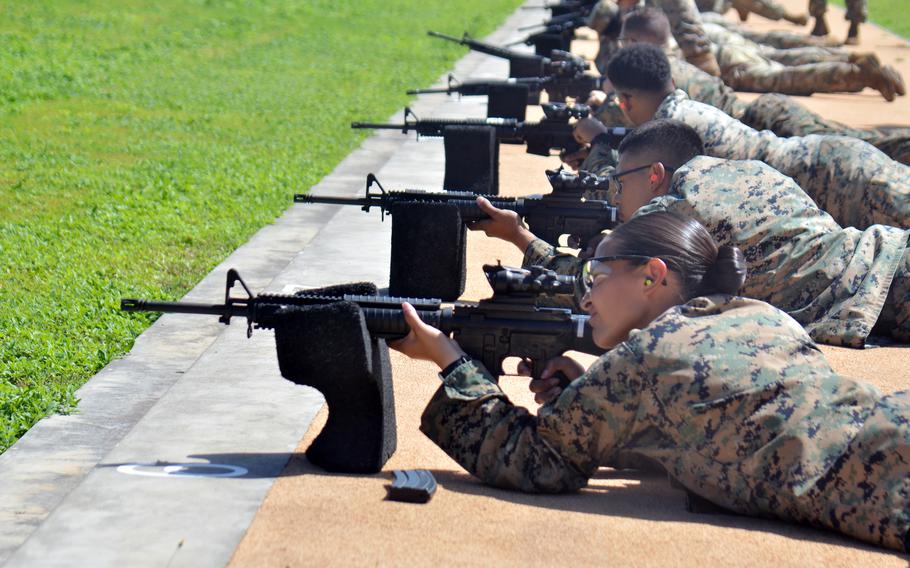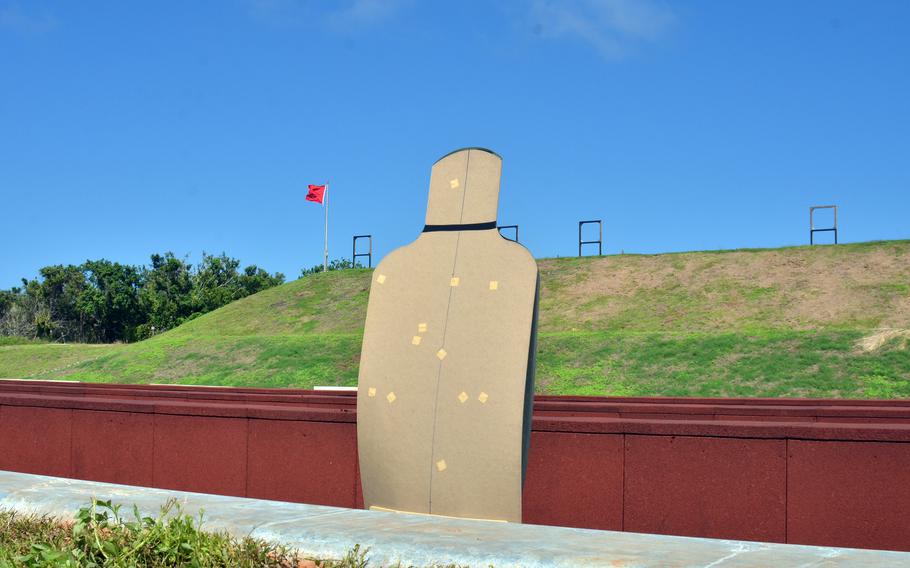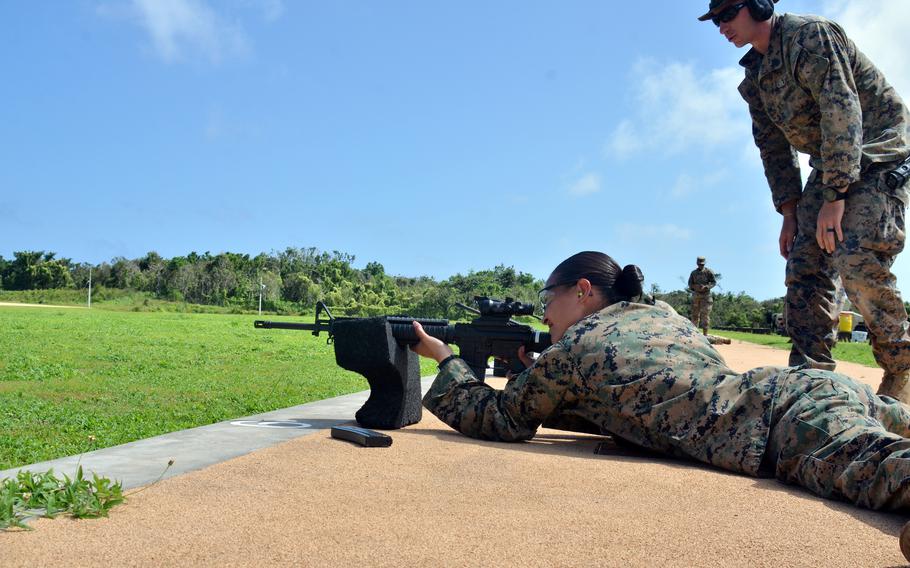
Marines and soldiers test out the new Mason Live Fire Range Complex at Camp Blaz, Guam on Nov. 30. (Seth Robson/Stars and Stripes)
CAMP BLAZ, Guam — Bullets are already blasting down a still-under-construction gun-range complex for troops stationed at the newest base in the Marine Corps.
The Mason Live Fire Range Complex is part of the 4,000-acre Camp Blaz, which officially opened in January. The state-of-the art complex is being validated by the Defense Department and will have its own official grand-opening early next year, range director Robert Ledyard said Thursday.
“We’ll be able to have up to 300 Marines qualify on the range in any given week,” he said while pointing out pop-up targets shaped like soldiers.
The targets can also move across the range on tracks, Ledyard said. They’re equipped with acoustic sensors that record where shots hit and send the information back to tablet computers that give shooters instant feedback.
The complex is named after Leonard Mason, a member of the 3rd Marine Division who was posthumously awarded the Medal of Honor for gallantry on Guam during World War II.
The facility includes rifle and pistol ranges bordering Andersen Air Force Base, where troops can shoot at targets up to 500 yards away. Work is still underway on a nearby machine gun range.
Blaz Marines and soldiers from the 368th Military Police Battalion, an Army Reserve unit, were shooting at the complex on Thursday.
Pfc. Angie Rosales Aguilar, of Santa Ana, Calif., said her adrenalin was pumping as she pulled the trigger on an M-4 rifle.
“I’ve only been here three months and it’s my first duty station and my first time shooting here,” she said during a break in the action.

A pop-up target at the new Mason Live Fire Range Complex, which is part of the 4,000-acre Camp Blaz that officially opened in January 2023. (Seth Robson/Stars and Stripes)
Rubber matting — akin to what you’d find on a modern children’s playground — covers the ground at the firing positions. It’s soft and comfortable, Aguilar said.
The new ranges are aligned along Guam’s north coast and have rock berms to catch stray rounds. To protect water traffic, radars monitor a buffer zone that extends 4,600 yards offshore during rifle practice and 6,300 yards offshore during machine gun training.
The buffer zone is off-limits to boats, but range controllers monitor the radars and shut down training if vessels stray into the area, Ledyard said.
The former active-duty Marine range control officer said the facility is an improvement over the 300-yard range at Naval Base Guam and is better than the ranges on Okinawa. Thousands of Okinawa-based Marine billets are expected to move to Guam over the next several years.
Construction is also ongoing south of Andersen at what will become the Skaggs Urban Training Complex, Ledyard said.
That facility, due to open late next year, is named for Luther Skaggs, another 3rd Marine Division member, who received the Medal of Honor after heroic actions that severely wounded him while fighting on Guam in World War II.
The Skaggs complex will include a live-fire shoot house, grenade range and a tactical vehicle obstacle course, Ledyard said. It will also feature 11 new buildings for urban training, including a mock embassy, and 122 abandoned military homes.
Skaggs will be fitted with cameras to record training for after-action review, Ledyard said.

Marine Pfc. Angie Rosales Aguilar tests out the new Mason Live Fire Range Complex at Camp Blaz, Guam on Nov. 30. (Seth Robson/Stars and Stripes)